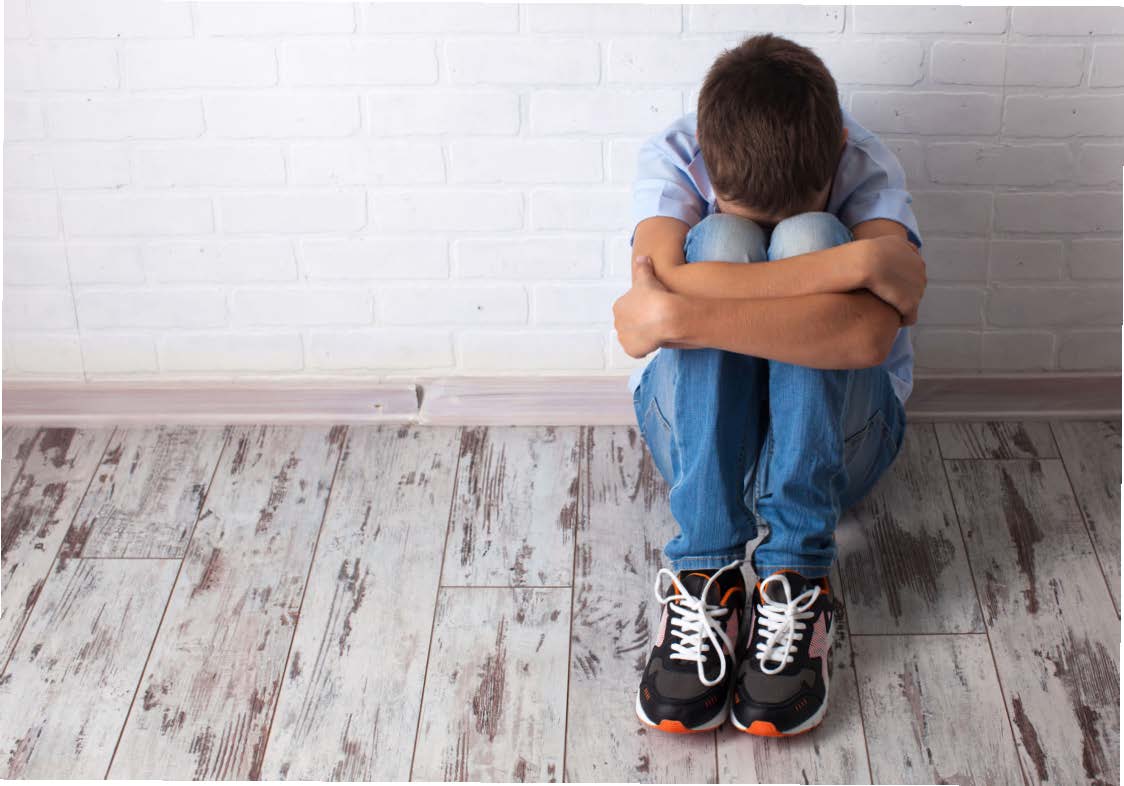
STRATEGIES FOR CHILDREN WITH SPECIAL NEEDS
BY DIANA MTK AUTIN AND LAUREN AGORATUS, M.A.
One out of five children experiences bullying.1 Children with disabilities are more likely to be bullied than their peers. It was found that "35.3% of students with behavioral and emotional disorders, 33.9% of students with autism, 24.3% of students with intellectual disabilities, 20.8% of students with health impairments, and 19% of students with specific learning disabilities face high levels of bullying victimization."2
Extreme bullying can even cause a child to develop special healthcare and mental health needs. Appropriate anti-bullying prevention and intervention strategies help both the victim and the bully. While evidence-based bullying prevention and intervention strategies help all children, there may need to be additional approaches when the "victim" and/or the bully have special needs.
TYPES OF BULLYING
Bullying comes in many forms. It can be physical, such as hitting or pushing, emotional, such as verbal insults, or social, such as exclusion. Cyberbullying adds the component of making the bullying widely "public" via social media. Bullying can also involve two or more of these forms. For example, a student with cognitive disabilities may be pushed aside in the hallway, being called the "R-Word" in the cafeteria, not allowed to play ball with other children at recess, and then made fun of online.
EFFECTS OF BULLYING
- Bullying affects children in many ways. Some of these are:
- • Injury
- • Loss of self-esteem
- • Poorer academic performance
- • School avoidance •Increased anxiety or depression
- • Increased drop-out rates
- • Self-harm, including suicide 3 (especially due to cyberbullying due to its pervasiveness)
PROTECTIONS FOR STUDENTS WITH DISABILITIES
Students with disabilities have additional protections against bullying and harassment under federal laws. Students with IEPs (individualized education programs) fall under the Individuals with Disabilities Education Act (IDEA). Students with 504 plans are covered by Section 504 of the Rehabilitation Act of 1973. The U.S. Department of Education Office of Civil Rights (OCR) issued guidance to school districts (see Resources). If families are having problems with bullying of their child with special needs, they can contact their Parent Center for free help. See Resources for OCR letter and Parent Center list.
BULLYING PREVENTION
It's important for schools to use evidence-based bullying prevention and intervention programs. Three effective programs include the Olweus Bullying Prevention Program (elementary through high school); Steps to Respect (grades 3-6); and KiVa (grades 4-6): edu- cationandbehavior.com/research-based-bullying-prevention-programs
The Office of Justice Programs has an MPG-I Guide focused on bullying in schools at ojjdp.gov/mpg-iguides/topics/bullying/index.html The U.S. Department of Education's information on evidence-based programs can be found at www2.ed.gov/policy/speced/guid/idea/memosd- cltrs/bullyingdcl-enclosure-8-20-13.pdf For effective strategies to prevent bullying in early childhood, go to preventingbullying.promoteprevent.org/preventing-bullying-in-early-childhood.•
School administrators/teachers, families, and students themselves need to recognize that bullying is not a "childhood rite of passage." Bullying causes lasting effects and is no longer tolerated. Parents and professionals, as well as students themselves, can partner to eliminate bullying of all students. •
ABOUT THE AUTHORS:
Diana Autin is the Executive Co-Director of the SPAN Parent Advocacy Network (SPAN), NJ's Parent Training and Information Center; Family-to-Family Health Information Resource Center; Family Voices, Federation of Families for Children's Mental Health, and Parent to Parent USA NJ affiliate; and Military Family 360 Support Project among other programs. Autin co-directs NE-PACT, the Parent Technical Assistance Center for Region A, providing technical assistance and capacity-building to the federally-funded Parent Centers, and codirects Leadership in Family Professional Partnerships, providing assistance to the network of Family to Family Health Information Centers. Lauren Agoratus, M.A. is the parent of a child with multiple disabilities who serves as the Coordinator for Family Voices-NJ and as the central/southern coordinator in her state's Family-to-Family Health Information Center, both housed at the SPAN Parent Advocacy Network (SPAN) at spanadvocacy.org
References
- References 1. stopbullying.gov/media/facts/index.html#stats
- 2. Rose et al., 2012
- 3. c dc.gov/violenceprevention/youthviolence/bullyingresearch/fastfact.html?CDC_AA_ref Val=https%3A%2F%2Fwww.cdc.gov%2Fviolenceprevention%2Fyouthviolence%2Fbullyingresear ch%2Findex.html
BUDDIES NOT BULLIES : BULLYING PREVENTION RESOURCES
STOPBULLYING.GOV StopBullying.Gov is run by the U.S. Department of Health and Human Services. Information is given to both schools and students themselves.
What Schools Can Do stopbullying.gov/prevention/at-school/index.html In Spanish: espanol.stopbullying.gov/prevenci%C3%B3n/en-la-escuela- us4/%C3%ADndice.html
What Kids Can Do stopbullying.gov/kids/what-you-can-do/index.html In Spanish: espanol.stopbullying.gov/ni%C3%B1os/lo-que-puede-hacer- t4r/%C3%ADndice.html
CENTERS FOR DISEASE CONTROL AND PREVENTION The CDC has a section on bullying and violence prevention. There is information on bullying statistics, the effects of bullying, and a video for students, "Be Someone's Hero."
Preventing Bullying cdc.gov/violenceprevention/youthviolence/bullyingresearch/fastfact.html In Spanish: ww.cdc.gov/violenceprevention/youthviolence/bullyingresearch/span- ish/index.html
Violence Prevention cdc.gov/violenceprevention/youthviolence/index.html In Spanish: cdc.gov/violenceprevention/youthviolence/spanish/index.html
PARENT CENTERS - HELP FOR FAMILIES AND STUDENTS parentcenterhub.org/find-your-center
WRIGHTSLAW - BULLYING AND HARASSMENT Wrightslaw has information specific to children with special needs. Data is provided on the prevalence of bullying of students with disabilities. There is also information on applicable laws such as IDEA and Section 504. wrightslaw.com/info/harassment.index.htm
STOMP OUT BULLYING Stomp Out Bullying addresses the responsibility of students to each other. There is also a hotline for students who need help. stompoutbullying.org
POSITIVE BEHAVIORAL INTERVENTIONS & SUPPORTS The National Center for Positive Behavioral Interventions and Supports is the cornerstone of addressing challenging behaviors, including bullying. The premise is being proactive instead of reactive after the fact. In addition, positive reinforcement, rather than negative punitive methods, are used to encourage students. pbis.org/school/bully-prevention
U.S. DEPARTMENT OF EDUCATION, OFFICE OF CIVIL RIGHTS - GUIDANCE TO SCHOOLS www2.ed.gov/about/offices/list/ocr/letters/colleague-bullying-201410.pdf